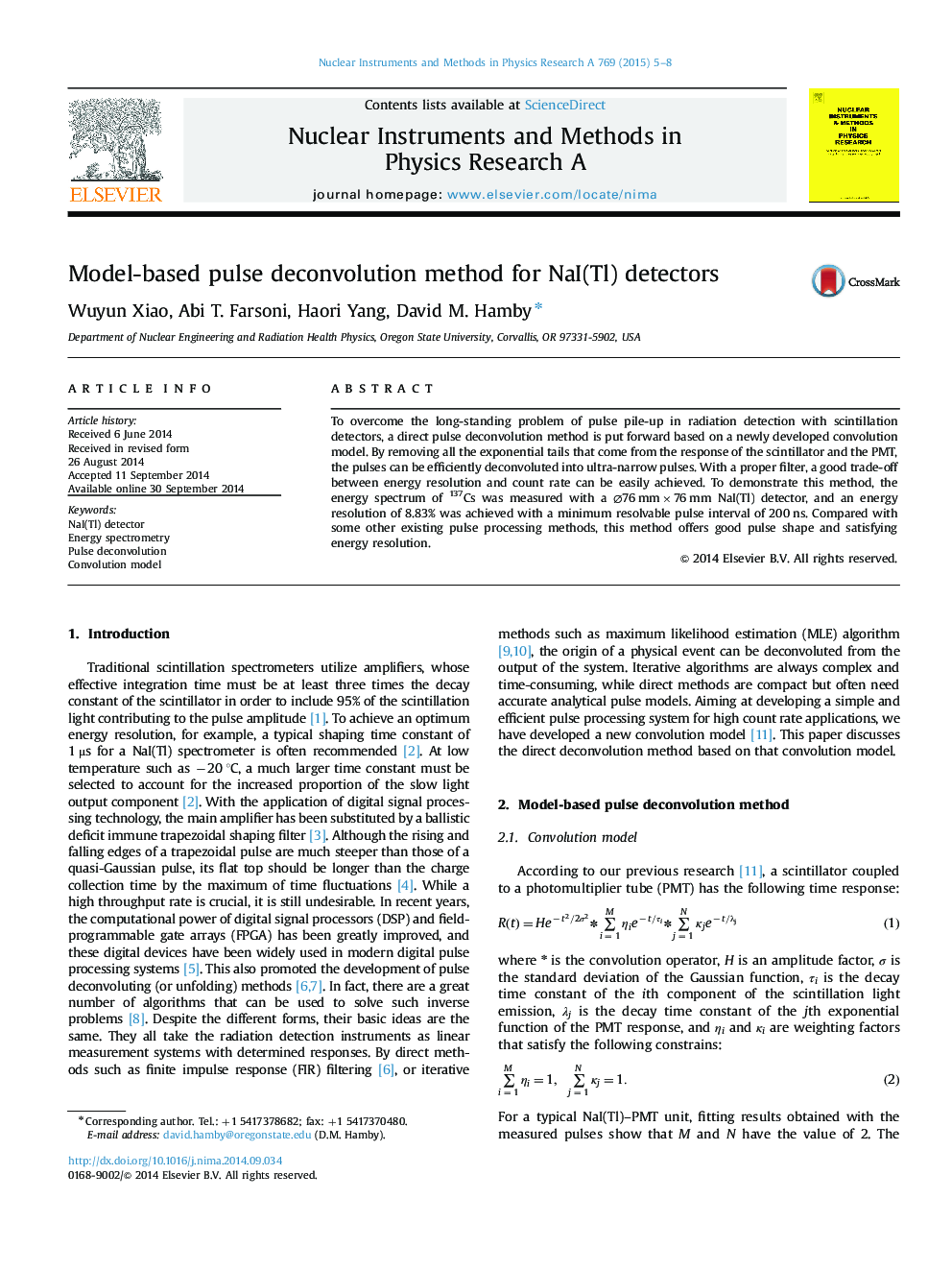| Article ID | Journal | Published Year | Pages | File Type |
|---|---|---|---|---|
| 1822385 | Nuclear Instruments and Methods in Physics Research Section A: Accelerators, Spectrometers, Detectors and Associated Equipment | 2015 | 4 Pages |
To overcome the long-standing problem of pulse pile-up in radiation detection with scintillation detectors, a direct pulse deconvolution method is put forward based on a newly developed convolution model. By removing all the exponential tails that come from the response of the scintillator and the PMT, the pulses can be efficiently deconvoluted into ultra-narrow pulses. With a proper filter, a good trade-off between energy resolution and count rate can be easily achieved. To demonstrate this method, the energy spectrum of 137Cs was measured with a ∅76 mm×76 mm NaI(Tl) detector, and an energy resolution of 8.83% was achieved with a minimum resolvable pulse interval of 200 ns. Compared with some other existing pulse processing methods, this method offers good pulse shape and satisfying energy resolution.
